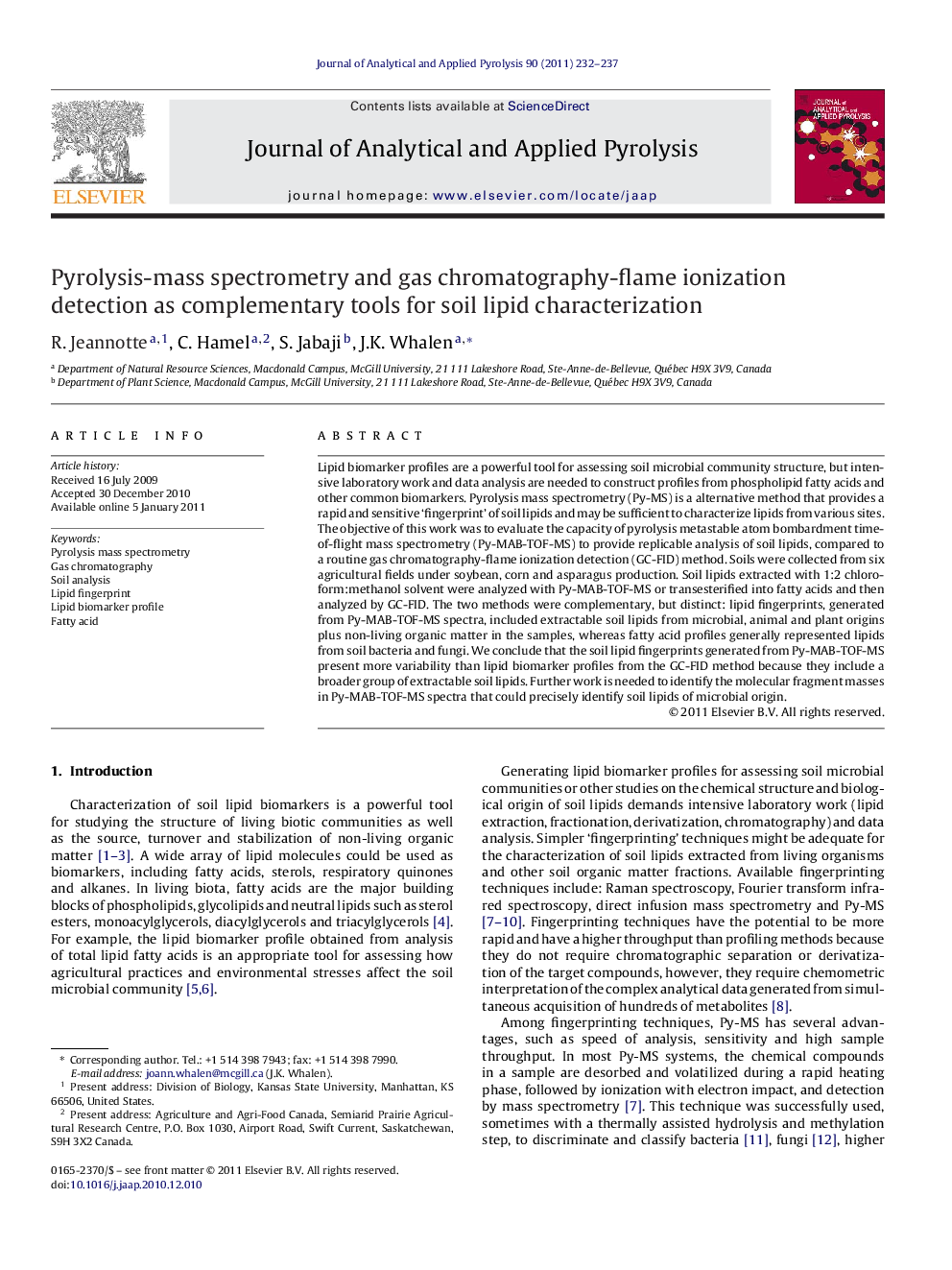| Article ID | Journal | Published Year | Pages | File Type |
|---|---|---|---|---|
| 7607254 | Journal of Analytical and Applied Pyrolysis | 2011 | 6 Pages |
Abstract
Lipid biomarker profiles are a powerful tool for assessing soil microbial community structure, but intensive laboratory work and data analysis are needed to construct profiles from phospholipid fatty acids and other common biomarkers. Pyrolysis mass spectrometry (Py-MS) is a alternative method that provides a rapid and sensitive 'fingerprint' of soil lipids and may be sufficient to characterize lipids from various sites. The objective of this work was to evaluate the capacity of pyrolysis metastable atom bombardment time-of-flight mass spectrometry (Py-MAB-TOF-MS) to provide replicable analysis of soil lipids, compared to a routine gas chromatography-flame ionization detection (GC-FID) method. Soils were collected from six agricultural fields under soybean, corn and asparagus production. Soil lipids extracted with 1:2 chloroform:methanol solvent were analyzed with Py-MAB-TOF-MS or transesterified into fatty acids and then analyzed by GC-FID. The two methods were complementary, but distinct: lipid fingerprints, generated from Py-MAB-TOF-MS spectra, included extractable soil lipids from microbial, animal and plant origins plus non-living organic matter in the samples, whereas fatty acid profiles generally represented lipids from soil bacteria and fungi. We conclude that the soil lipid fingerprints generated from Py-MAB-TOF-MS present more variability than lipid biomarker profiles from the GC-FID method because they include a broader group of extractable soil lipids. Further work is needed to identify the molecular fragment masses in Py-MAB-TOF-MS spectra that could precisely identify soil lipids of microbial origin.
Related Topics
Physical Sciences and Engineering
Chemistry
Analytical Chemistry
Authors
R. Jeannotte, C. Hamel, S. Jabaji, J.K. Whalen,
